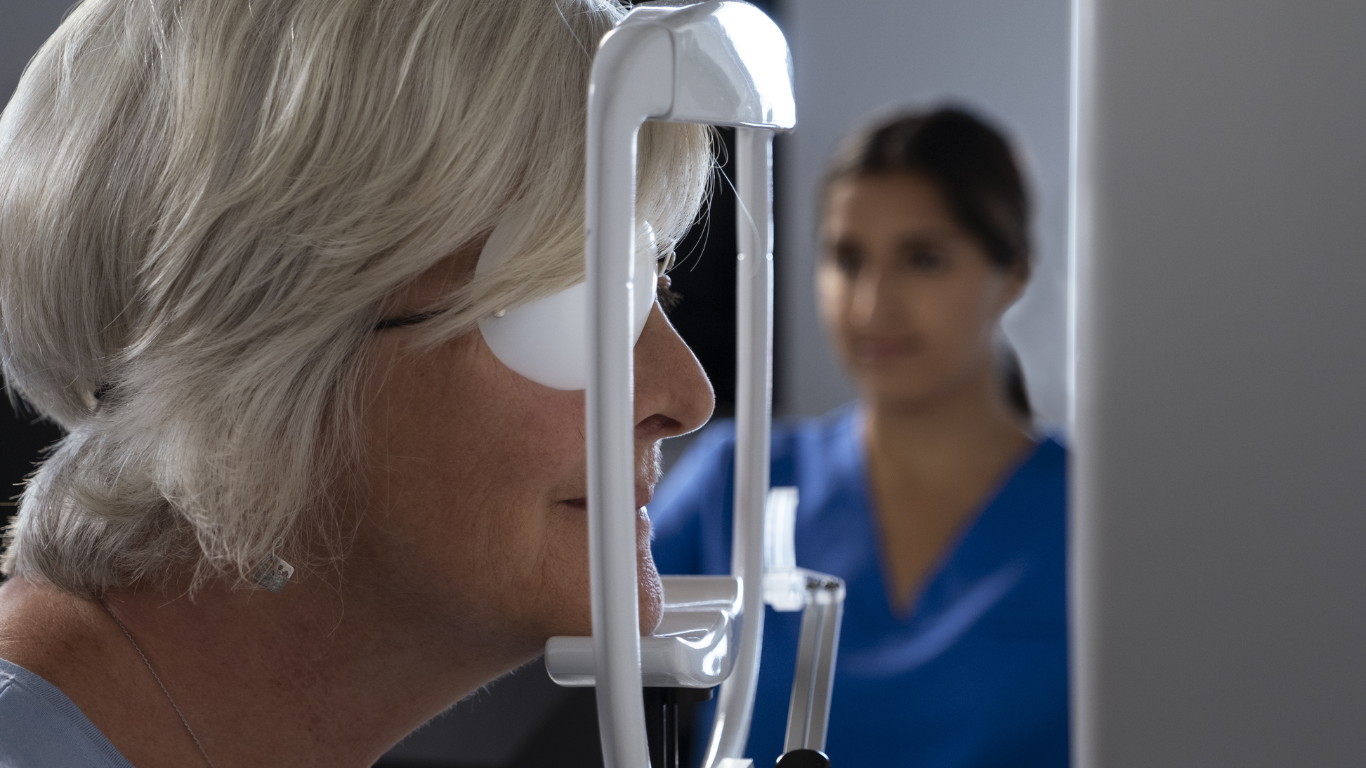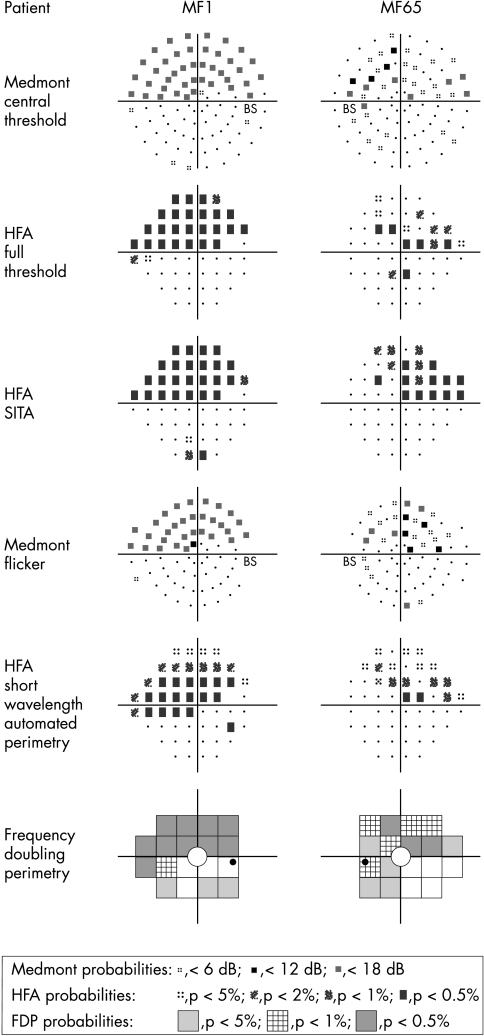
By Jason Anderson, Medmont APAC Sales Manager
Looking for a new automated perimeter for your optometry practice?
Both the Medmont M700 (M700) and Carl Zeiss Humphrey Visual Field Analyser (HFA) are used for visual field testing—a crucial part of detecting and treating glaucoma(1). In this comparison, I put them head-to-head to show why you need an M700 in your practice.
Research reveals that both Medmont and Humphrey perimeters may be used for clinical and research purposes with similar confidence(2). While that’s a good starting point, let’s dive deeper into their distinctions and advantages. This comparison compares each instrument’s features and capabilities, testing technology, ease of use, costs, and service and support requirements.
Have a read to draw your own conclusion.
Medmont M700:
Medmont’s Australian-made, hand-assembled automated perimeter leverages over 30 years of proven technology.
Known as a value leader for its reliable performance and longevity, you’ll find the M700 in many optometry practices in Australia and beyond. It’s designed to have higher Receiver Operating Characteristic (ROC) accuracy for glaucoma than standard Humphrey 24-2 and 30-2 tests(3).
Tests are also fully customisable—you can adjust test speeds and design tests with varying strategies and test points.
Zeiss Humphrey Field Analyser (HFA):
Study shows the HFA is comparable to the M700 for visual field testing and glaucoma diagnostics(4). Until recently, the Humphrey VF Analyser driving test was the main perimetry-based test approved as evidence by Australia’s driver’s licensing authorities.
The Medmont M700 Perimeter is now listed in the Australian AustRoads Medical Standards for Licensing and Clinical Management guidelines (2022) as accepted fitness for driving tests(5). It also meets the requirements for most driving test legislation globally.
Image source: Landers, John & Sharma, A., Goldberg, I., & Graham, S. (2003) ‘A comparison of perimetric results with the Medmont and Humphrey perimeters’ The British Journal of Ophthalmology, 87 (6), 690-694

Let’s explore the features and capabilities of both the Medmont and Humphrey perimeters.
Testing bowl design
Medmont: Open design, hemisphere bowl
Humphrey: Closed design, hemisphere bowl(6)
The M700’s bowl boasts open ergonomics to prevent common patient complaints of claustrophobia and poor ventilation. This is important as patient comfort influences test reliability and reproducibility. Discomfort can inflate fixation errors as well as false-positive and false-negative responses. According to Groth, S (2023), this is especially true for children, who may be intimated by a large bowl surrounding their face(7).
Stimulus type
Medmont: LED
Humphrey: Projection(8)
The M700 uses back-illuminated LED stimulus while the HFA uses projection stimulus. The static LED offers a quiet experience for the patient and removes the need for projection system servicing or replacement(9).
Computer
Medmont: External Windows PC
Humphrey: Built in touchscreen(10)
Perimeters with internal computers may need replacing when they reach their stated lifespan, to the tune of tens of thousands of dollars. The M700 allows you to select a laptop or desktop that meets Medmont’s recommended specifications, adding user flexibility, cost savings and up-to-date technology and functionality.
Testing technology
Both the M700 and HFA offer rapid and reliable screening and visual field threshold tests. That includes age-related screening, full threshold, fast threshold and single intensity. They’re used to assist in the detection of glaucoma, macula disease, neurological conditions, retinal disease and more.
Test Customisation Capability
Medmont: yes (all tests)
Humphrey: yes (some tests)(11)
The M700 offers a high density of test points in central regions for detailed information about visual field losses(12).
The stand-out advantage of the M700 is how customisable the tests are. During an exam, you can add test points, retest areas with local defects, and save partially completed tests. This unique feature prevents disturbances and rework, saving you valuable time and enhancing the patient’s experience.
Compare test types
| Medmont M700 | Humphrey (based on 740 model) | ||||||
| Name | Field size | Points | Strategy | Name | Field size | Points | Strategy |
| Central 22 | 24 degrees horizontal | 50 | Screening (custom) | Central 40 | 30 degrees | 40 | Screening |
| Central 30 | 30 degrees horizontal | 99 | Screening (custom) | Central 64 | 30 degrees | 64 | Screening |
|
Central 30
|
30 degrees horizontal
|
99
|
Screening (custom) | Central 76 |
30 degrees
|
76 | |
|
Central 30
|
30 degrees horizontal
|
99
|
Screening (custom) | Central 80 |
30 degrees
|
80 | |
|
Peripheral
|
30-50 degrees
|
72 | Screening (custom) | Peripheral 60 |
30-60 degrees
|
60 | |
| Glaucoma | 30 degrees with 50 deg nasal step | 103 | Screening (custom) | Nasal step | 50 degrees | 14 | Screening |
| Full field | 50 degrees | 163 | Screening (custom) | Full field | 50 degrees | 98 | Screening |
| Full field 81 | 55 degrees | 81 | screening | ||||
| Full field 120 | 55 degrees | 120 | screening | ||||
| Full field 135 | 87 degrees (temp) | 135 | Screening | ||||
| N/A | Full field 246 | 60 degrees | 246 | Screening | |||
| Macula | 10 degrees | 48 | Fast threshold | 10-2 | 10 degrees | 68 | Threshold (1 degree point) |
| Central | 30 degrees | 99 | Fast threshold | 24-2 | 24 | 54 | Threshold |
| Central | 30 degrees | 99 | Fast threshold | 30-2 | 30 degrees | 76 | Threshold |
| Peripheral | 30-50 degrees | 72 | Fast threshold | 60-4 | 30-60 | 60 | Threshold |
| Glaucoma | 30 degrees with 50 deg nasal step | 103 | Fast threshold | Nasal step | 50 degrees | 14 | Threshold |
| Macula | 10 degrees | 48 | Fast threshold | Macula | 5 degrees | 15 | Threshold (1 degree point) |
| Driving test | 80 degrees, temporal | 48 | 3 zone | Esterman Monocular | 150 degrees bitemporal | 120 | Fixed level 10 asb |
| NA | Superior 36# | 60 degrees, superior hemifield | 36 | Fixed level 10 asb | |||
| NA | Superior 64# | 60 degrees, superior hemifield | 64 | Fixed level 10 asb | |||
| Central 22A | 22 degrees | 45 | Fast threshold spatially adaptive | ||||
| CV% 100 point (Italian driving test) | 50 degrees | 100 | 3 zone | ||||
| Flash scan test | 22 degrees | 40 | Age related/screen | ||||
| German driving test | 75 temporal, 40 nasal | 101 | Age related | ||||
| German binocular | 150 bitemporal | 105 | Age related driving test | ||||
| Neurological test | 50 degrees | 163 | Fast threshold | ||||
| Spatially adaptive | 50 degrees | 39 | Fast threshold | ||||
Costing
Medmont: Less than $16,000 AUD
Humphrey: Around $20-30,000 AUD
When considering cost, it’s important to consider the longevity of a device as well as potential servicing fees and associated productivity disturbances.
The M700 is hand-made in Australia with no moving parts, and it pairs with external computer hardware. As a result, it has minimal maintenance needs and service requirements, which minimises practice interruptions and lost revenue.
Plus, rather than replace your instrument, you can upgrade your Medmont Studio software to keep your M700 current. It’s no surprise Medmont sees perimeters in use for over 20 years.
What’s more, the M700 is backed by responsive customer support that’s free of charge.
In contrast, the HFA employs a built-in computer, projection lamps, and a replaceable air-filter(13). This may add up to a higher likelihood of part replacements, servicing costs and complete unit replacement.
The M700 is economical, long-lasting and ergonomic.
As you can see, our automated perimeter offers significant advantages over the HFA.
The M700 is:
- highly cost effective (a low initial cost and minimal ongoing service fees),
- made in Australia and hand-built to last many years,
- built on decades of proven perimetry technology, and
- supported by free customer support.
It has:
- minimal maintenance and servicing needs (for uninterrupted productivity),
- customisable tests (a rare and clinically useful attribute),
- ergonomics designed to enhance patient comfort and test reliability, and
- integrates with your existing Medmont database.
To learn more about the benefits of the M700 for your practice, email sales@medmont.com.
Disclaimer: the information presented in this comparison is to the best of the author’s knowledge. You must do your own comparison research to determine the best perimeter for your practice needs.
